Returning to the Nile: Slow Travel in Aswan
After a bus ride back to Cairo and a quick flight south, I found myself once again in Aswan, ready to dive into the heart of felucca overnight Aswan Nubian culture. I came back for a reason: to drift along the Nile aboard a traditional felucca, Egypt’s iconic wind-powered sailboat, and reconnect with the Nubian spirit that makes this region so unforgettable.
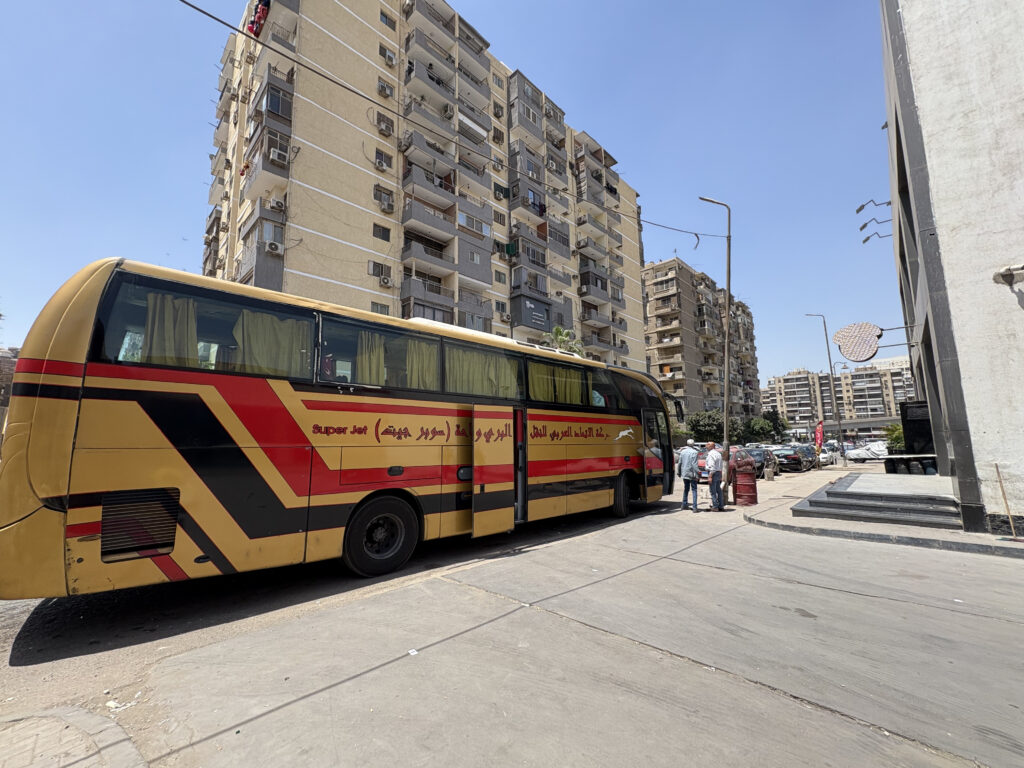
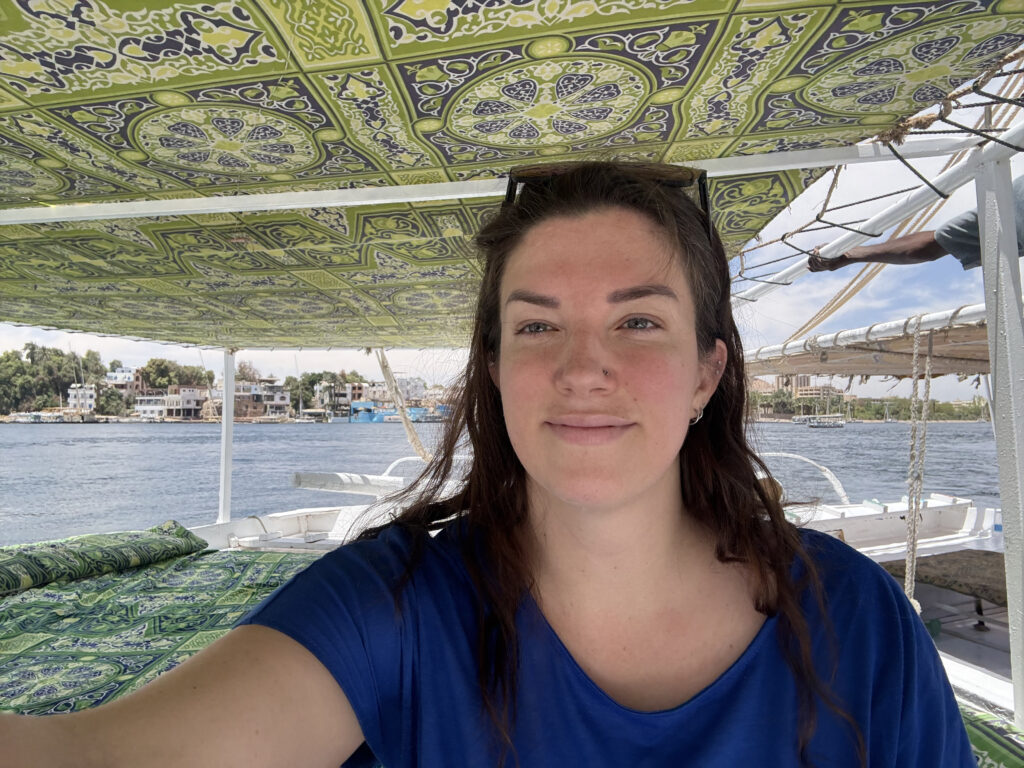
What is a Felucca?
Feluccas are traditional wooden sailing boats that have plied the Nile for thousands of years. Long before modern motors, these vessels transported goods and people along the river. Their flat bottoms and wide sails are designed to catch the strong desert winds—an engineering tradition dating back to the Pharaonic era.
In today’s world, feluccas offer travelers a glimpse into Egypt’s past. There’s no engine noise—just the flap of canvas, the ripple of water, and the hush of time.
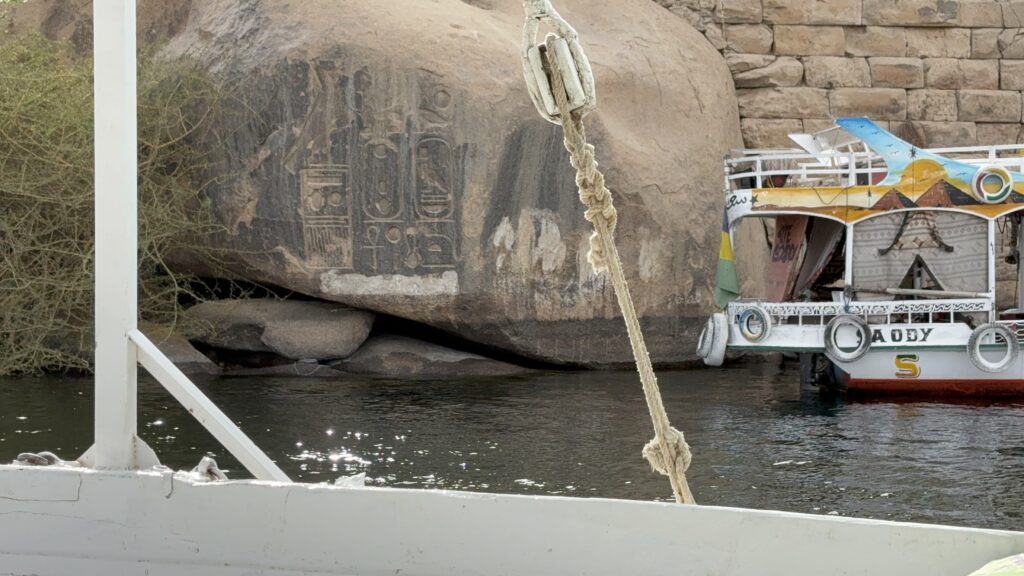
Reuniting with Yasine and Sailing the Nile
I joined my friend Yasine, a local felucca captain I’d met on a previous trip. We pushed off and spent the day under the sun, drifting past Elephantine Island and the west bank’s golden hills.
We ate homecooked Egyptian meals right on the deck—vegetable stew, rice, and warm flatbread. Later, we docked to walk through a small Nubian village, where mud-brick houses gleamed with color and locals greeted us with smiles.
As the sun dipped low, we hiked a hilltop for sunset views that spilled over the Nile and the ruins of Elephantine and Aswan below. That night, we laid out mosquito net tents and slept under the stars—the same stars ancient sailors once used to guide their way.

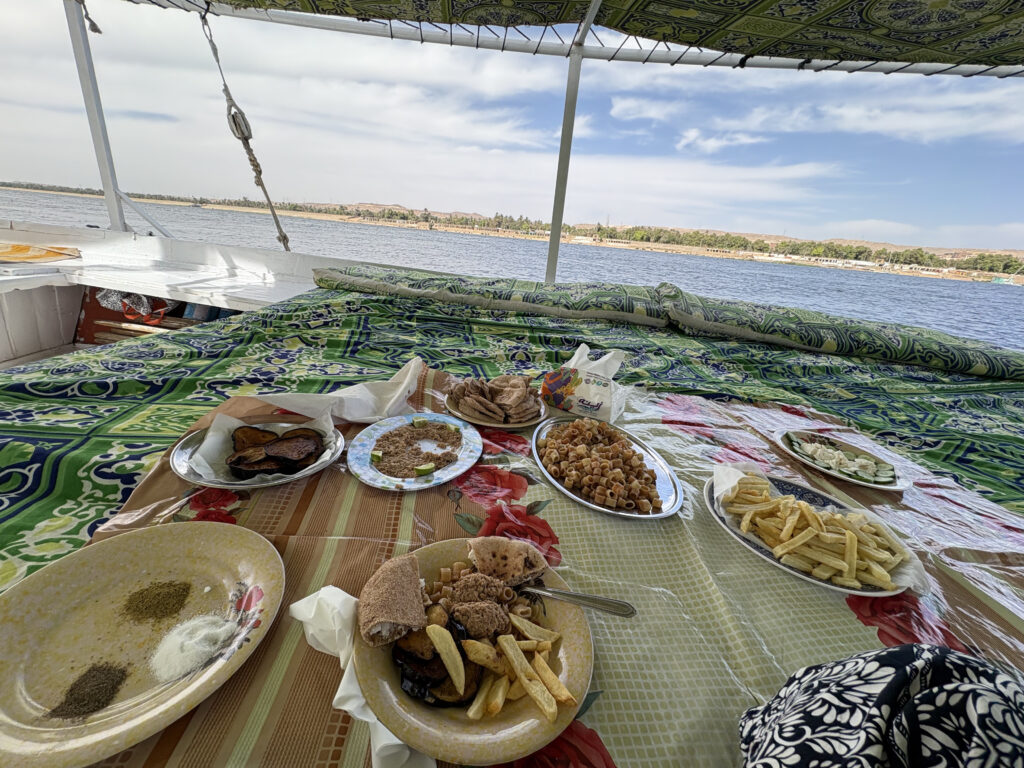
The Nubians: People of the Nile
The Nubian people are one of Egypt’s oldest and most distinct cultural groups. Their roots trace back over 4,000 years, with their ancient kingdoms—Ta-Seti, Kerma, and later Nubia under Kushite rule—playing central roles in the history of both Egypt and Sudan.
Known for their hospitality, music, brightly painted homes, and rich oral traditions, many Nubians were displaced during the construction of the Aswan High Dam in the 1960s. Whole villages were flooded as Lake Nasser formed, leading to resettlement and a struggle to preserve their cultural identity.
Despite this, Nubian culture remains vibrant, especially in villages along the Nile and around Aswan, where their traditions, language, and crafts live on.
Hidden History: Tombs of the Nobles
A few days later, I woke early and took the public ferry across the Nile to explore the Tombs of the Nobles. These tombs, carved into the cliffs of the west bank, date from the Old and Middle Kingdoms—around 2000 to 1500 BCE—and are the final resting places of regional governors, priests, and nobles.
Unlike the packed Valley of the Kings, these tombs see almost no crowds. A guard unlocked several tombs just for me, letting me peer at vivid scenes of daily life: boatmaking, harvesting, musicians playing flutes—glimpses of a world long gone, yet eerily familiar.
Above the tombs sits the Kubbet el-Hawa, a domed Muslim shrine and ancient funerary site that overlooks the Nile. The climb is steep, but the view? Worth every step.
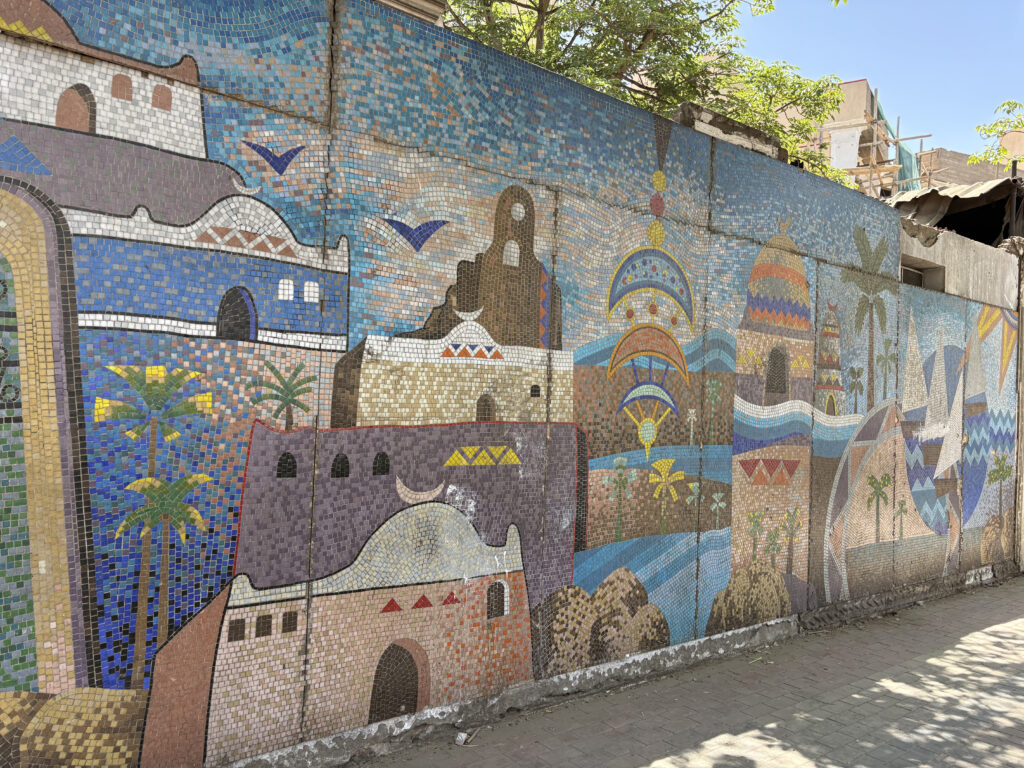
Learning at the Nubian Museum
After the ferry back, I made my way to the Nubian Museum—a must-see if you’re in Aswan. The museum beautifully showcases the history, art, and culture of the Nubian people, from prehistoric times to the present day.
I saw jewelry, traditional clothing, photos of displaced villages, and even reconstructions of ancient homes, providing deeper insight into what I’d just experienced on the felucca and in the village.

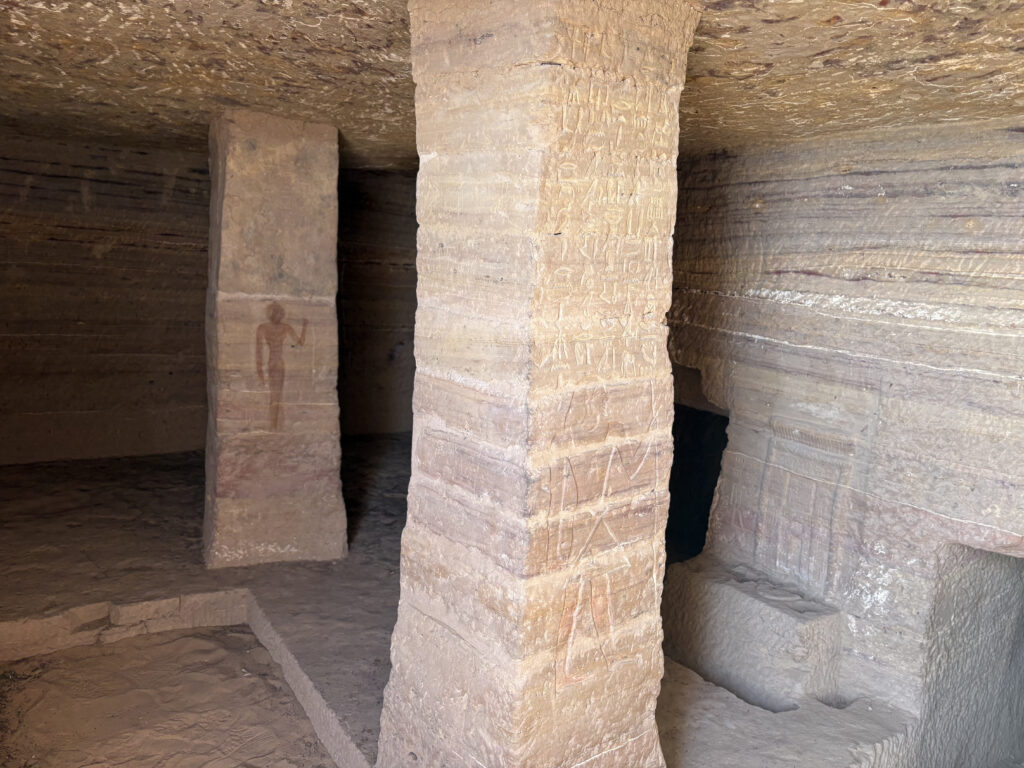
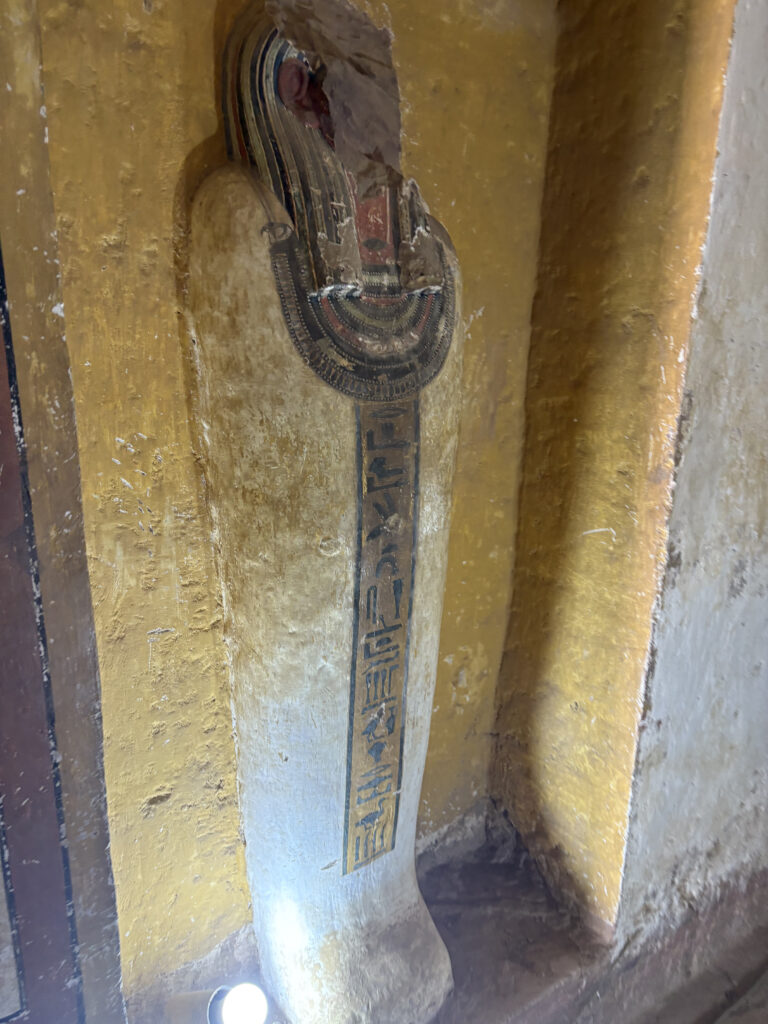

A Journey Worth Repeating
Aswan once again gave me time, silence, and awe. From the hush of the river under moonlight to the quiet tombs filled with whispers of history, it reminded me that some places deserve to be revisited.
And after tea, sunsets, and one last boat ride, I caught a flight to my next adventure: Zambia.
Travel Tips for Aswan Adventurers
- Felucca Trips: Book with local captains like Yasine; go overnight for the full experience. Expect to unplug and enjoy simplicity.
- Tombs of the Nobles: Go early. Bring small change for tips and a flashlight for darker chambers.
- Nubian Museum: Budget 1–2 hours; it’s well air-conditioned and thoughtfully curated.
- Cultural Note: Respect local customs in Nubian villages—ask before photographing people or homes.
Want More Egypt Travel Tips?
Sign up for the Destined for Adventure free newsletter for deep-dive stories, lesser-known travel gems, and inspiration for your next epic trip.
Your travel dreams, our expertise. With our travel concierge service, we handle every detail — from custom itineraries to local experiences — so you can simply enjoy the journey. Stress-free, seamless, and unforgettable. Ready to plan your next adventure? Let’s get started!





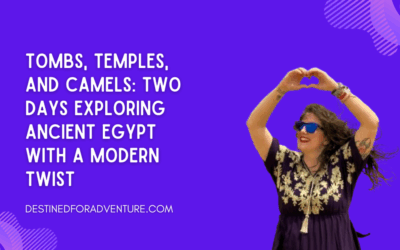
0 Comments